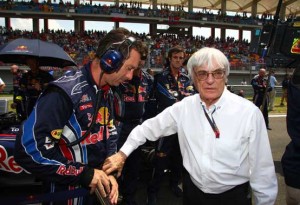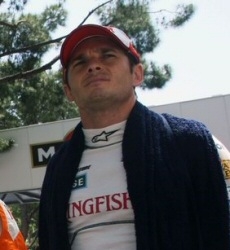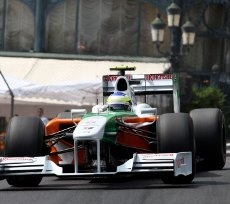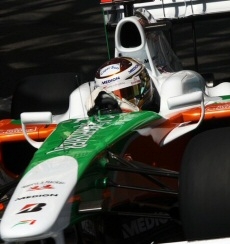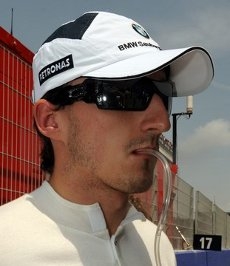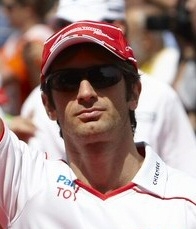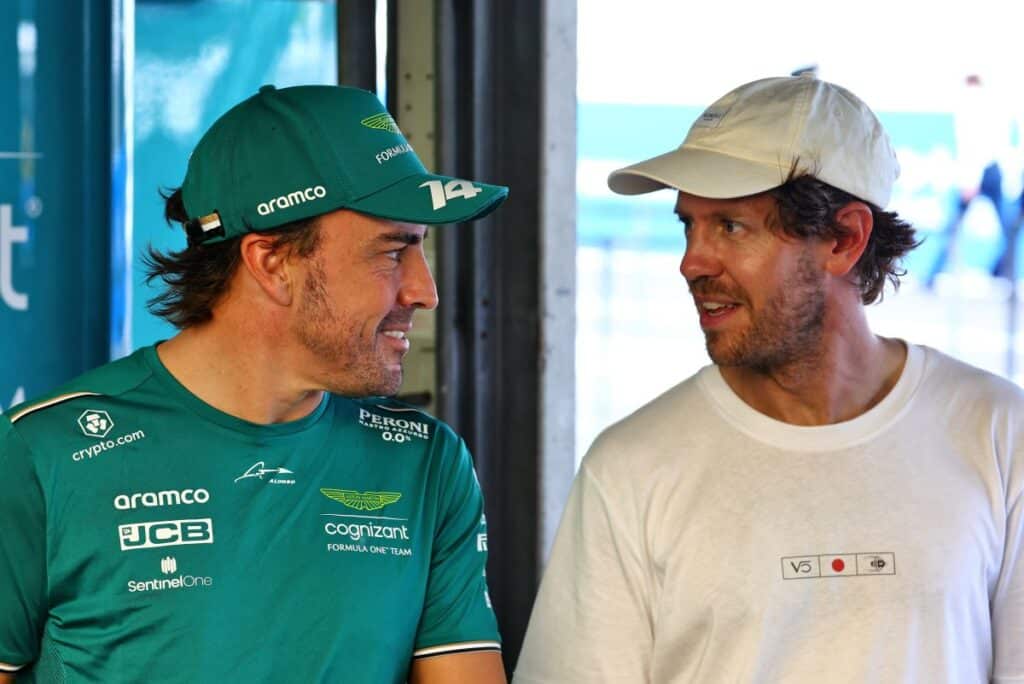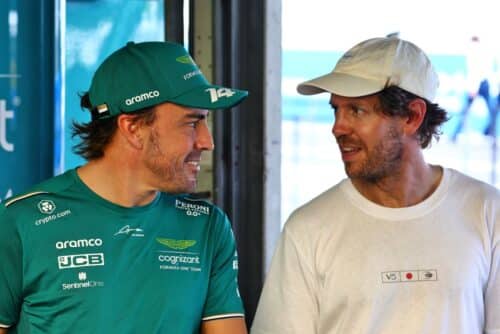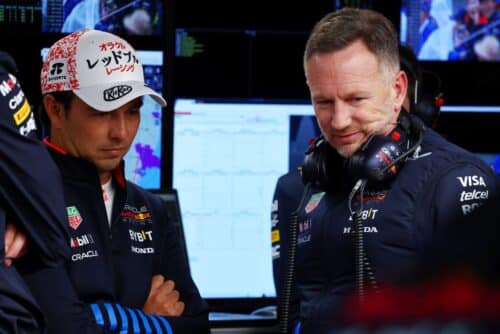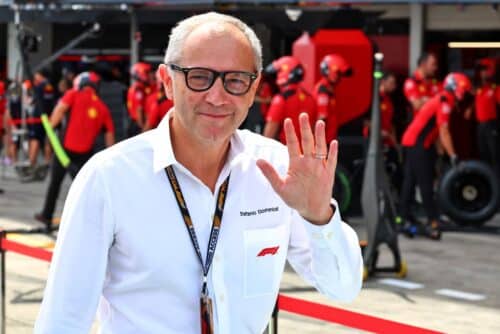Monaco GP: preview and TV times

Formula 1 returns to Monte Carlo, for perhaps the most fascinating Grand Prix in the world. Monaco is the kingdom of glamour, of the jet set, of worldliness, in short, a unique showcase for the Circus and its sponsors.
This is perhaps the most anticipated race of the year together with Spa, and the reason is easy to say: it is the most anomalous Grand Prix of the entire calendar, it represents a real contradiction compared to all the other circuits of the circus equipped with pharaonic structures and enviable safety measures. Not in Munich! Escape views do not exist, the barriers pass very close while you speed at over 200 km/h between mythical points: Sainte Devote, Portier, Tabac, Piscine... The only negative note is the overtaking, or rather their absence. It is impossible to overtake and for this reason starting from the front is essential, in normal weather conditions starting from the third/fourth row precludes any possibility of victory. In any case, this does not seem to displease the fans who, called to express their opinions on the various tracks of the world championship through an FIA survey, put Monaco in first place, even separating two sacred monsters such as Spa and Monza.
Nelson Piquet said that driving in Monaco was “like riding a bike in your living room”. It is in fact a track whose narrowness is impressive, you cannot afford the slightest mistake, you have to keep your concentration at maximum for all 78 laps of the race. This makes us understand how in Monaco only the best emerge, even with a mechanical vehicle that isn't up to par, it's one of the few tracks where perhaps the "handle" can still make the difference, you just need to look at the roll of honor to understand it : the names of Senna, Prost, Schumacher, Moss, are frequent; Ayrton Senna excels above all with six victories, including five consecutive. However, never doze off! Twists and turns are frequent, the Safety Car can come in at any moment completely disrupting the race. Don't forget the rain which, when it arrives, transforms the track into a hell full of traps.
The route, which has remained almost unchanged from the first edition valid for the world championship to today, is created from the streets that connect the various buildings of the historic centre, the points are legendary: immediately after the start you tackle the Sainte Devote curve, towards right, very narrow, after a short climb uphill you face the Casino, Mirabeau and Lowes curves, a downhill hairpin to be tackled at 45/50 km/h which makes it the slowest point of the entire F1 world championship. You then arrive at the double Portier curve, which is very important for getting onto the Tunnel straight at the end of which you reach the highest speed before entering the Nouvelle Chicane. There is another short stretch that leads to the legendary Portier curve. Tabac to be tackled almost in full at around 150 km/h with the protective wall just a few centimeters away. You then tackle the double Piscine chicane and the Rascasse and Noghes curves, named after Anthony Noghes, tobacco industrialist and founder of the Automobile Club de Monaco and promoter of the first race held in the Principality in 1929.
In 2003 some changes were made to the track by eliminating some walls in order to make the track faster, and the following year a radical modification was made to the pit area and pit lane in order to make the work of technicians and mechanics. Another peculiarity is the paddock, which is not located behind the pits like on the other tracks, but in another point of the town, near the Rocca. The way the weekend takes place is also characteristic: the Free Practice sessions, which are usually held on Friday, are held on Thursday during the weekend, giving technicians, drivers and workers a day of freedom and thus extending The race weekend is one day for the enjoyment of the sponsors who can use the opportunity for promotional campaigns that never fail.
The Monaco Grand Prix is rich in history: in 1984 a very young Senna highlighted all his talent on a modest Toleman under a biblical downpour, going after Prost with a sensational comeback, a comeback which was then blocked only by the early interruption of the race. There is no shortage of dramatic episodes: in 1955 Ascari ended up in the sea with his Lancia, fortunately without suffering any consequences, ironically he died a few days later in Monza while testing, for pure fun, the Ferrari of his colleague and friend Castellotti. In 1967 at the Bandini port chicane I died following burns caused by a terrible accident. In 1994, in an F1 still in shock from Senna's fatal accident a few weeks earlier, during qualifying, the Austrian Wendlinger risked dying following a bad accident at the exit of the tunnel.
From a technical point of view it is necessary to set the car in an optimal way: it is necessary to adopt a very high load aerodynamic configuration, the car is raised a lot from the ground to counteract the bumps, manhole covers and depressions of the asphalt on which the citizens of Monaco pass every day . The tires don't suffer much, unlike the gearbox which is the element under most pressure: more than four thousand gear changes are made during the race.
This year, probably, what will dominate in the paddock will not be the wait for this legendary race, but the news that shocked the world of Formula 1 at the beginning of last week: Ferrari, in conflict with the FIA over the new 2010 regulations, which provide for the introduction of a voluntary cap (in exchange for significant technical concessions) on team budgets, has threatened to leave the Circus at the end of 2009 if the rules do not change. The same position was expressed by Renault, Red Bull, Toro Rosso and Toyota.
Mosley does not seem to want to give in, and in a meeting with FOTA, held in a private room at Heathrow airport in London, he confirmed his intentions. Bernie Ecclestone has repeatedly declared that he wants to protect Ferrari's position, well aware of the negative media impact that an abandonment by the Maranello team would have on the circus.
The fight, as well as over the regulations, is also obviously political: Mosley's mandate expires next October and increasingly insistent rumors point to former Ferrari team manager Jean Todt as his possible successor, even if Mosley is aiming for re-election.
Everyone's hope, especially that of the fans, is that the teams will show unity, perhaps even abandoning the circus in favor of an alternative world championship far from the crazy rules and senseless management of the FIA. We'll see.
Circuit length: 3,340 km
Laps to go: 78
Total distance: 260,520km
Number of curves: 19 – 13 on the right and 6 on the left
Bridgestone compounds: super soft/soft
Test lap record: 1:13.532 – Kimi Raikkonen – McLaren Mercedes – 2006
Race lap record: 1:14.439 – Michael Schumacher – Ferrari – 2004
Distance record: 1h40:29.329 – Fernando Alonso – McLaren Mercedes – 2007
Record of victories by driver: Ayrton Senna – 6 victories
Team win record: McLaren – 15 wins
Pole record for driver: Ayrton Senna – 5 pole positions
Team pole record: McLaren – 11 pole positions
Record of fastest laps by driver: Michael Schumacher – 5 fastest laps
Fastest lap record by team: Ferrari – 15 fastest laps
Domenico Della Valle
Hall of Fame
01. 1950 J Fangio – Alfa Romeo
02. 1955 M Trintignan – Ferrari
03. 1956 S Moss – Maserati
04. 1957 J Fangio – Maserati
05. 1958 M Trintignan – Cooper Climax
06. 1959 J Brabham – Cooper Climax
07. 1960 S Moss – Lotus Climax
08. 1961 S Moss – Lotus Climax
09. 1962 B McLaren – Cooper Climax
10. 1963 G Hill – BRM
11. 1964 G Hill – BRM
12. 1965 G Hill – BRM
13. 1966 J Stewart – BRM
14. 1967 D Hulme – Brabham Repco
15. 1968 G Hill – Lotus Ford
16. 1969 G Hill – Lotus Ford
17. 1970 J Rindt – Lotus Ford
18. 1971 J Stewart – Tyrrell Ford
19. 1972 J Beltoise – BRM
20. 1973 J Stewart – Tyrrell Ford
21. 1974 R Peterson – Lotus Ford
22. 1975 N Lauda – Ferrari
23. 1976 N Lauda – Ferrari
24. 1977 J Scheckter – Wolf Ford
25. 1978 P Depailler – Tyrrell Ford
26. 1979 J Scheckter – Ferrari
27. 1980 C Reutermann – Williams Ford
28. 1981 G Villeneuve – Ferrari
29. 1982 R Patrese – Brabham Ford
30. 1983 K Rosberg – Williams Ford
31. 1984 A Prost – McLaren TAG
32. 1985 A Prost – McLaren TAG
33. 1986 A Prost – McLaren TAG
34. 1987 At Senna – Lotus Honda
35. 1988 At Prost – McLaren Honda
36. 1989 At Senna – McLaren Honda
37. 1990 At Senna – McLaren Honda
38. 1991 At Senna – McLaren Honda
39. 1992 At Senna – McLaren Honda
40. 1993 At Senna – McLaren Ford
41. 1994 M Schumacher – Benetton Ford
42. 1995 M Schumacher – Benetton Renault
43. 1996 O Panis – Ligier Mugen Honda
44. 1997 M Schumacher – Ferrari
45. 1998 M Hakkinen – McLaren Mercedes
46. 1999 M Schumacher – Ferrari
47. 2000 D Coulthard – McLaren Mercedes
48. 2001 M Schumacher – Ferrari
49. 2002 D Coulthard – McLaren Mercedes
50. 2003 J Montoya – Williams BMW
51. 2004 J Trulli – Renault
52. 2005 K Raikkonen – McLaren Mercedes
53. 2006 F Alonso – Renault
54. 2007 F Alonso – McLaren Mercedes
55. 2008 L Hamilton – McLaren Mercedes
These are the times for the 67th Monaco Grand Prix
Thursday 21st May
10:00-11:30 Free Practice 1 – Live on Sky Sport 2/16:9/HD
14:00-15:30 Free Practice 2 – Live on Sky Sport 2/16:9/HD
Saturday May 23
11:00-12:00 Free Practice 3 – Live on Sky Sport 2/16:9/HD
14pm-00pm Qualifying – Live on Sky Sport 15/00/HD and Rai Due
Sunday May 24
14pm Race – Live on Sky Sport 00/2:16/HD and Rai Uno
if you want to always be updated on our news
Follow us here

